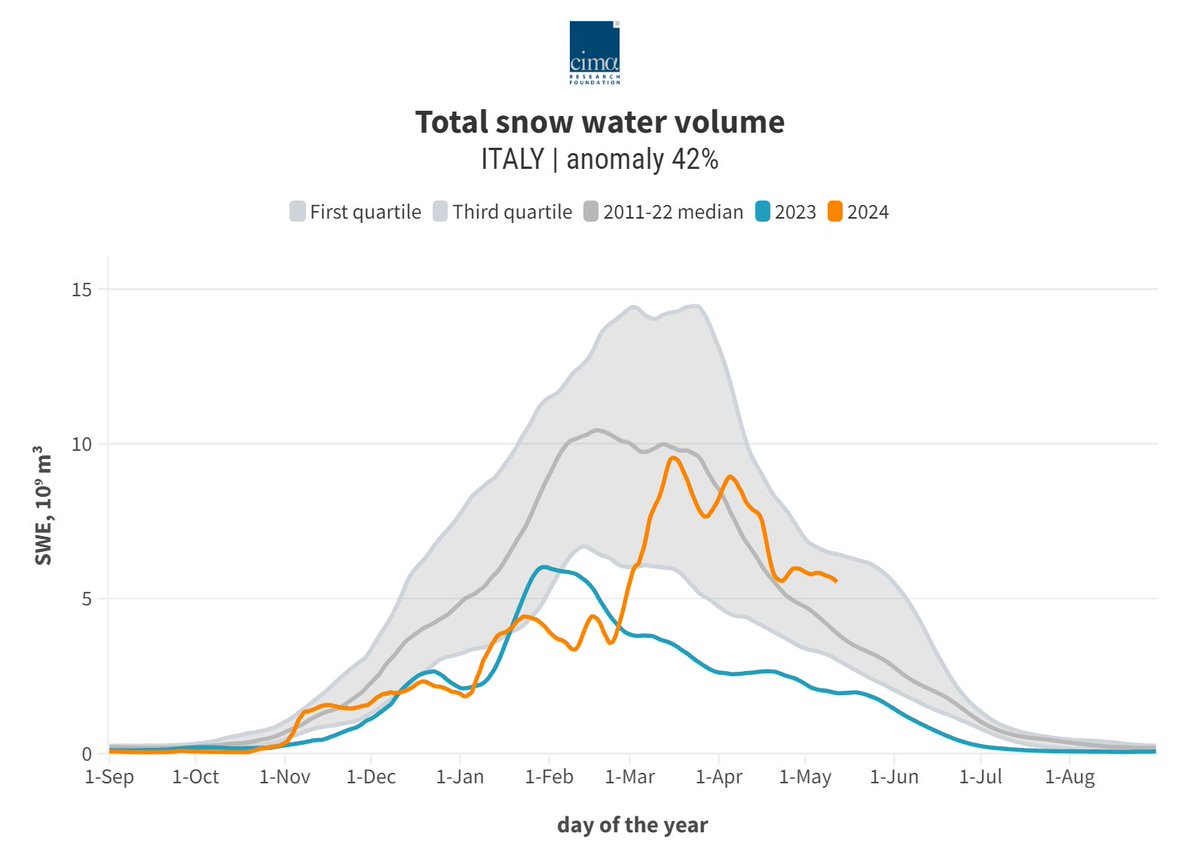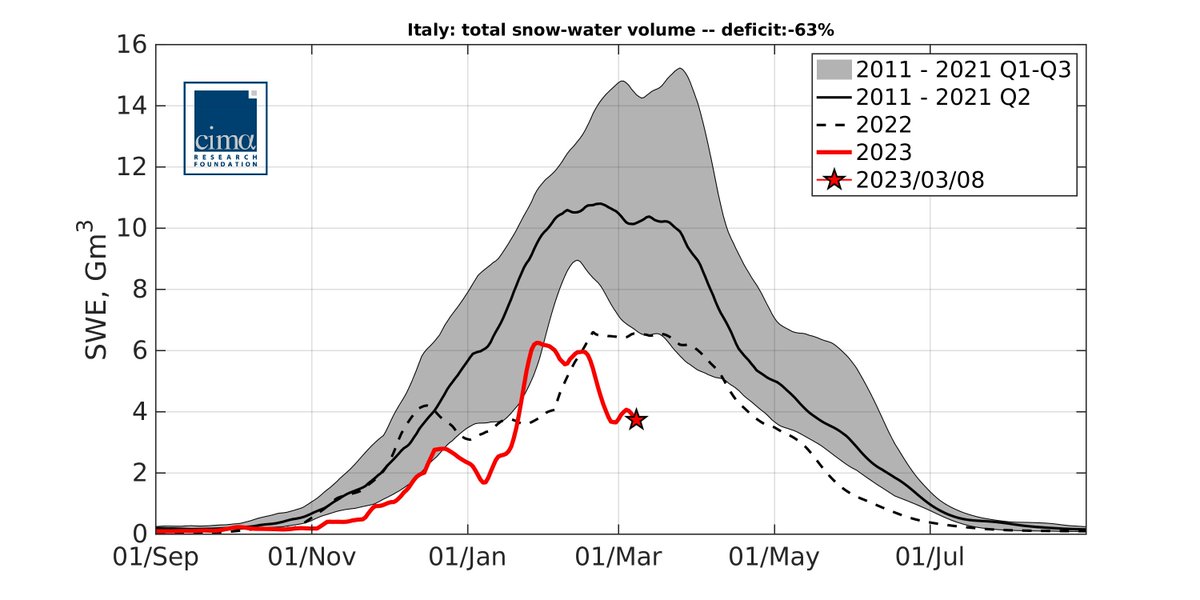
International Centre for Environmental Monitoring in the fields of #CivilProtection #DisasterRiskReduction and #Biodiversity #Conservation #SendaiFramework
How to get URL link on X (Twitter) App


 Lezione 1⃣: da inizio marzo in poi, la situa #neve è cambiata molto sulle Alpi. Cosa abbiamo imparato? Che per avere neve…serve che nevichi😉In altre parole, serve che il meteo sia fresco (sx) e umido (dx), un po’ come nelle ultime settimane sulle Alpi, ma non sugli Apennini🙁
Lezione 1⃣: da inizio marzo in poi, la situa #neve è cambiata molto sulle Alpi. Cosa abbiamo imparato? Che per avere neve…serve che nevichi😉In altre parole, serve che il meteo sia fresco (sx) e umido (dx), un po’ come nelle ultime settimane sulle Alpi, ma non sugli Apennini🙁 


 Un po’ di contesto: dal punto di vista delle #precipitazioni, febbraio è stato più generoso del solito al nord - in particolare al nord ovest. Al centro sud, al contrario, febbraio è stato ancora avaro...
Un po’ di contesto: dal punto di vista delle #precipitazioni, febbraio è stato più generoso del solito al nord - in particolare al nord ovest. Al centro sud, al contrario, febbraio è stato ancora avaro... 

 Partiamo dagli #Appennini allora: ecco la risorsa idrica nivale attuale sul #Tevere. 👇
Partiamo dagli #Appennini allora: ecco la risorsa idrica nivale attuale sul #Tevere. 👇

 👆 L'avete notato? A fine gennaio eravamo in una situazione molto migliore.
👆 L'avete notato? A fine gennaio eravamo in una situazione molto migliore.
 👆 Did you notice that?
👆 Did you notice that?
 We haven’t seen much new snow since late-January snowfalls, and thus estimate half of snow water resources at national scale compared to 2011-21 (deficit: -45%). At national scale, conditions remain similar to 2022, which was already a significant #drought year. 👇
We haven’t seen much new snow since late-January snowfalls, and thus estimate half of snow water resources at national scale compared to 2011-21 (deficit: -45%). At national scale, conditions remain similar to 2022, which was already a significant #drought year. 👇 

 Non abbiamo visto molte nuove nevicate dopo la fine di gen. Al momento, quindi, stimiamo che le risorse idriche nivali su scala nazionale siano la metà rispetto al 2011-21 (deficit -45%).
Non abbiamo visto molte nuove nevicate dopo la fine di gen. Al momento, quindi, stimiamo che le risorse idriche nivali su scala nazionale siano la metà rispetto al 2011-21 (deficit -45%).

 The climate crisis makes it increasingly urgent and necessary to put #adaptation strategies, as well as #mitigation, at the center of policies.
The climate crisis makes it increasingly urgent and necessary to put #adaptation strategies, as well as #mitigation, at the center of policies. 
 Vedrete molti grafici come questo👇
Vedrete molti grafici come questo👇

 🔑 You’ll see many plots like this one👇
🔑 You’ll see many plots like this one👇 



 Si tratta di un fenomeno temporalesco che si auto-alimenta grazie allo scontro tra due masse d’aria con caratteristiche differenti, una caldo-umida, ricca di vapore acqueo, l’altra più fresca e secca, la cui convergenza mantiene attiva la corrente ascendente, ovvero la convezione
Si tratta di un fenomeno temporalesco che si auto-alimenta grazie allo scontro tra due masse d’aria con caratteristiche differenti, una caldo-umida, ricca di vapore acqueo, l’altra più fresca e secca, la cui convergenza mantiene attiva la corrente ascendente, ovvero la convezione